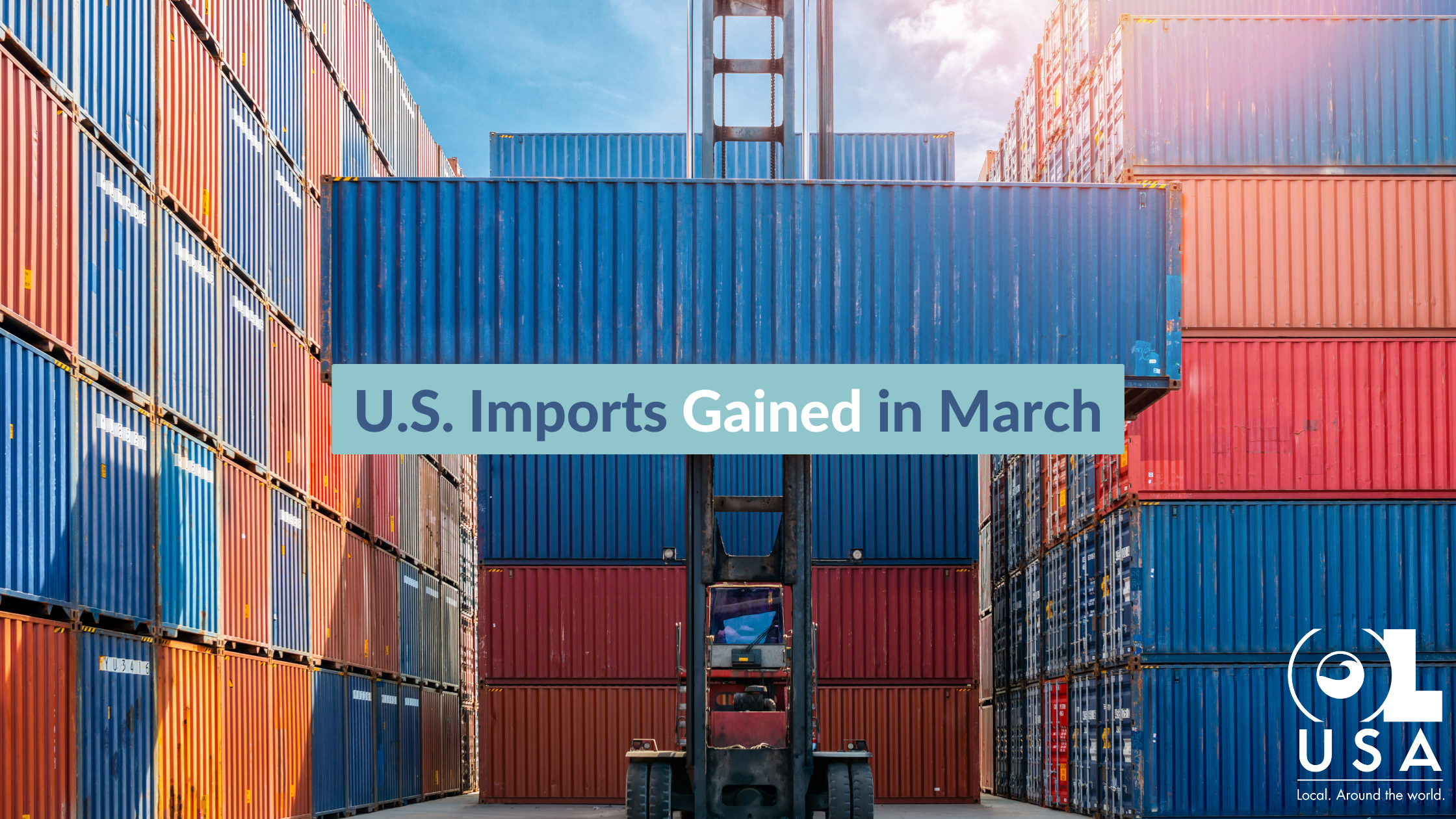Imports gained in March. What do experts say about the future?
Sales of imported products in the US in recent quarters have been declining, and businesses have been struggling to bounce back. Primarily, that decline has been driven by the huge volatility in consumer demand. First, we saw a tremendous spike in demand (to the point where bare shelves were common in the United States, something that hasn’t happened very often in recent years). Countless businesses stepped up their inventory order volume to meet the dramatically increased spending habits, but didn’t foresee the drop in demand that followed last year.
This decrease in imported products kicked off, deepened, and has lingered over the US for months. Concerns over a potential recession and high inflation have helped keep consumer demand lower than expected. All of this follows not only a panicked spending spree (the Great Toilet Paper and Hand Sanitizer Rush of 2020, for example), but a sustained period during which middle class Americans not only kept their jobs, but suddenly found themselves receiving more than one stimulus check. Those stimulus checks were treated like windfalls by those fortunate enough to keep their current jobs at their current rate, and a great number of them rushed out and spent them on big ticket items. Televisions, furniture, vehicles, etc.—durable goods. That means that these people don’t need to replace them for several years, so demand for a huge portion of industries has dropped. As a result, businesses were stuck with warehouses full of products they had trouble selling, so they cut back on their inventory order volume to compensate while they clear out existing stock. That reduction has shown itself in stark detail for the past several months, as imports have been steadily declining.
Does March mark a turning a point?
This past March marks a bright spot for US import volume: month-over-month, imports are up 6.9% compared to February, and even up 4.2% over March of 2019 (before Covid). That’s still down 27.5% over last March, but it’s giving some analysts even more reason to hope that consumer demand is beginning to rebound.
There was one additional interesting tidbit in this data from Descartes: the share of imports from China have dropped precipitously over the past year. In February of 2022, China’s share of US imports was 41.5%; as of last month, China accounted for only 31.6%. Whether this will hold or begin to revert in the future is unclear; the amount of uncertainty in the global economy makes it difficult to predict.
Regardless of the nation of origin for US imports, a number of analysts and experts are predicting (maybe optimistically) that the volume will keep climbing for the next few months. One analyst forecasts a 26.7% increase over March’s volume by the end of August.
What does this mean for US businesses?
While everyone’s hoping for a return to normalcy and stability, there isn’t exactly a mountain of positive data to start popping champagne yet. It’s undoubtedly a good sign, however, and there is good reason to hope for a business rebound. If businesses are stepping up their order volume, that logically indicates that they have a good reason to do just that.
Part of the reason for this volume increase might be the dramatically reduced freight rates. After a huge rate spike and the subsequent collapse last year, rates have been volatile, and businesses struggled to find shipping space at reasonable prices. Many of them were locked into long term agreements with carriers at much higher rates than were available on the open market just a couple of months after the ink had dried on their contract—and in some cases, it was less expensive to pay the penalty to break the agreement and go with spot pricing where they could find it.
Recently, global shipping prices have been low—maybe not the lowest in history, but close enough that businesses might be taking advantage of discounted freight costs while they have the opportunity to do so.
The second potential conclusion to draw from this is that businesses may have finally begun to chip away at their overstocked warehouses, to the point where they once again have ready space available for additional inventory. This could mean that consumer demand is beginning to rebound enough to free up more warehousing space, or simply that additional warehousing space has been made available at favorable rates—but experts are hinting that consumer demand has begun to pick back up, thankfully.
While we aren’t completely certain what the rest of the quarter or the next will really bring, the past several weeks have had enough bright spots to give a lot of businesses better hope for the future. It’s possible that we’ve reached the beginning of the “return to mean” stage of the market cycle, during which supply, demand, and profitability lose some of the volatility and once again reach stable ground. That less shaky territory will likely be a lot closer to where the US economy was before Covid kicked off in the West in March of 2020. While some businesses might miss the early days of the pandemic—which brought many of them higher sales than they’d ever seen before—an awful lot more will be grateful for a return to pre-Covid stability instead.



